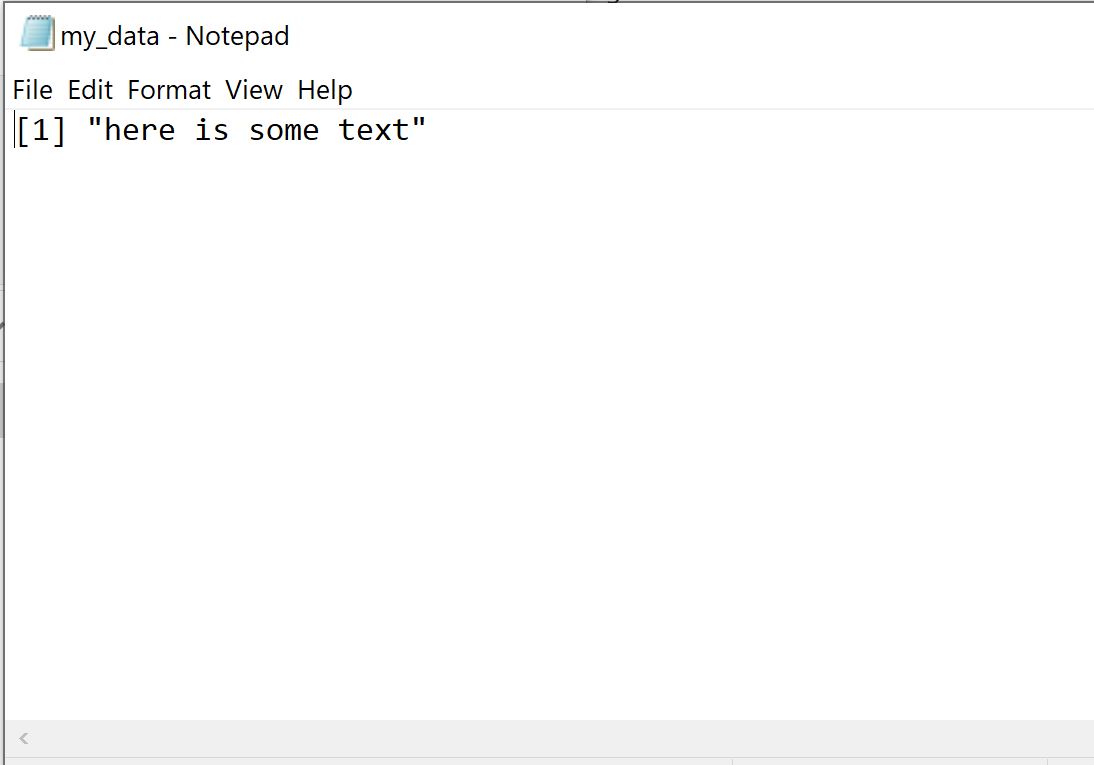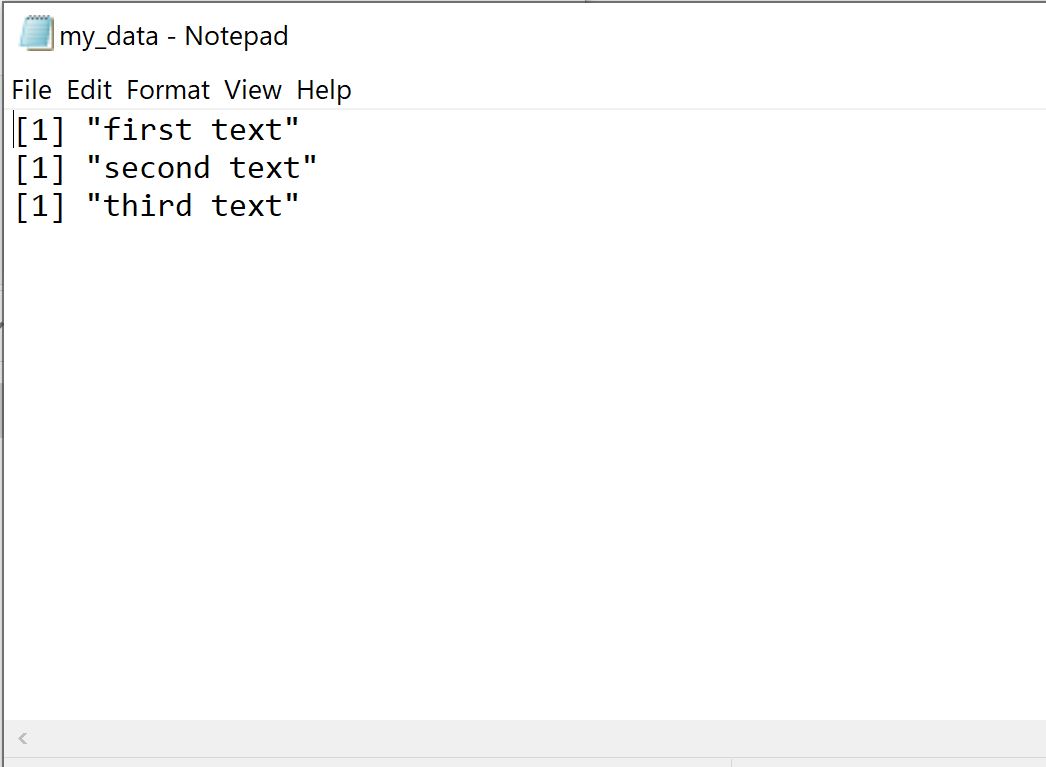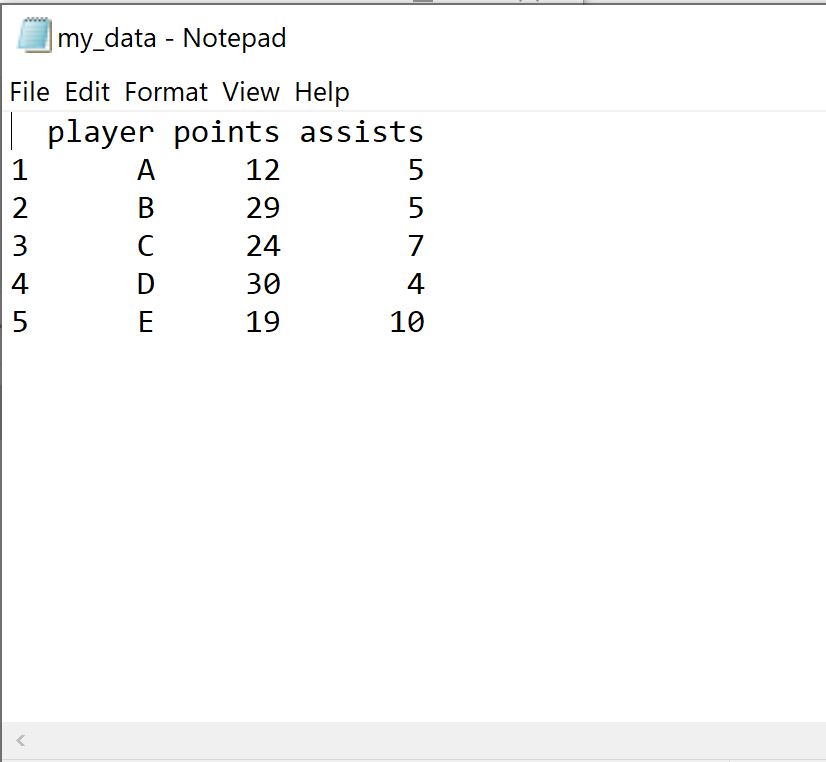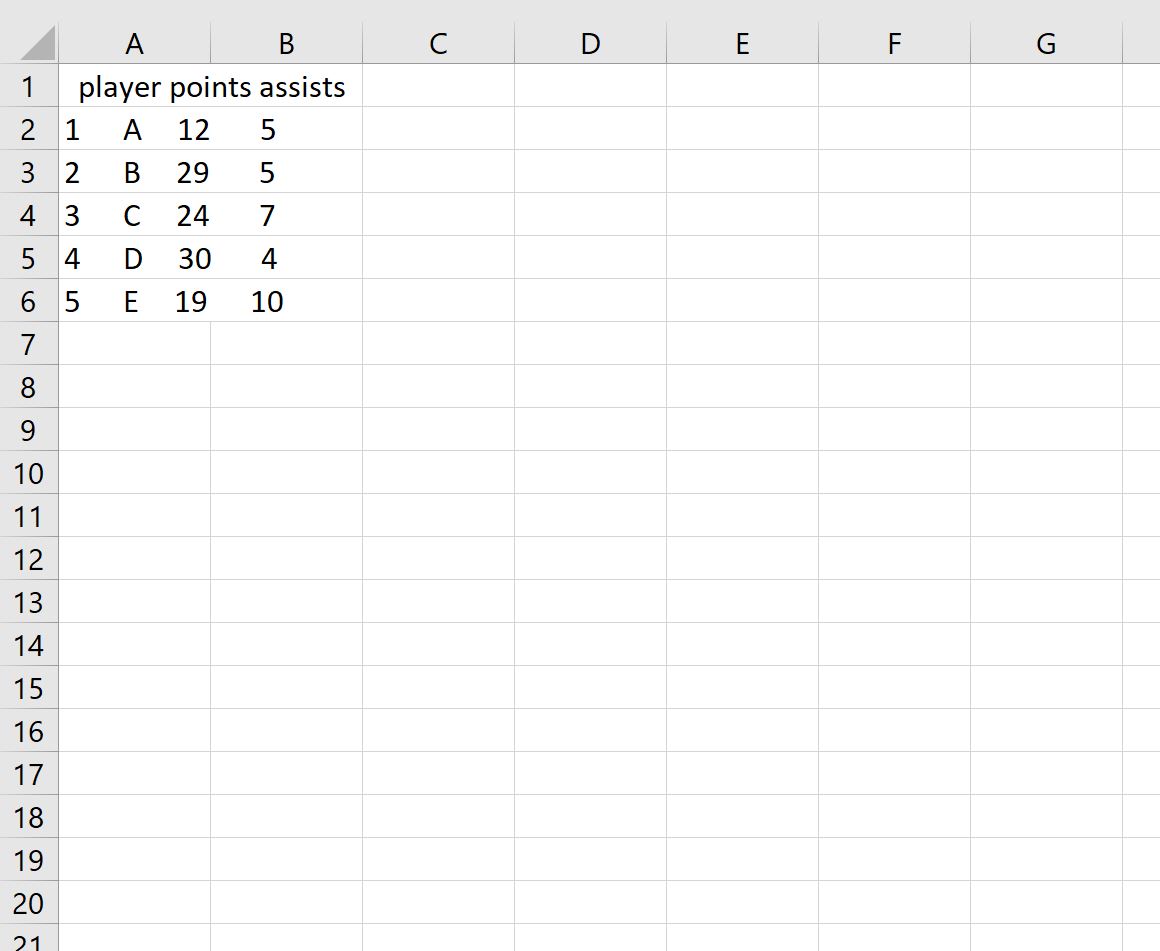如何在 r 中使用 sink() 函数(附示例)
您可以使用Sink()函数将 R 输出驱动到外部连接。
此功能非常有用,因为它允许您轻松地将字符串或数据块导出到 CSV 文件或文本文件。
该函数使用以下基本语法:
#define file name
sink(" my_data.txt ")
#write this text to file
"here is some text"
#close the external connection
sink()
以下示例展示了在实践中使用此函数的三种不同方法。
示例 1:使用 Sink() 将字符串导出到文本文件
我们可以使用以下Sink()函数将字符串导出到文本文件:
#define file name
sink(" my_data.txt ")
#write this text to file
"here is some text"
#close the external connection
sink()
然后我们可以导航到当前工作目录并打开文本文件:

该文件包含我们指定的字符串。
您还可以将多个字符串导出到文本文件:
#define file name
sink(" my_data.txt ")
#write several strings to file
"first text"
"second text"
"third text"
#close the external connection
sink()
然后我们可以导航到当前工作目录并打开文本文件:

该文件包含我们指定的三个字符串。
示例 2:使用 Sink() 将数据块导出到文本文件
我们可以使用以下Sink()函数将数据块导出到文本文件:
#define file name
sink(" my_data.txt ")
#define data frame to write to file
df <- data. frame (player=c('A', 'B', 'C', 'D', 'E'),
dots=c(12, 29, 24, 30, 19),
assists=c(5, 5, 7, 4, 10))
print (df)
#close the external connection
sink()
然后我们可以导航到当前工作目录并打开文本文件:

该文件包含我们创建的数据框。
示例 3:使用 Sink() 将数据框导出到 CSV 文件
我们可以使用以下Sink()函数将数据框导出到 CSV 文件:
#define file name
sink(" my_data.csv ")
#define data frame to write to file
df <- data. frame (player=c('A', 'B', 'C', 'D', 'E'),
dots=c(12, 29, 24, 30, 19),
assists=c(5, 5, 7, 4, 10))
print (df)
#close the external connection
sink()
然后我们可以导航到当前工作目录并打开 CSV 文件:

CSV 文件包含我们创建的数据框。
其他资源
以下教程解释了如何在 R 中执行其他常见任务: